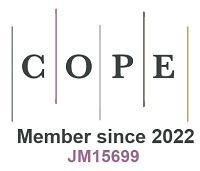REFERENCES
1. Sun Q, Wang N, Xu Q, Yu J. Nanopore-supported metal nanocatalysts for efficient hydrogen generation from liquid-phase chemical hydrogen storage materials. Adv Mater 2020;32:e2001818.
2. Mboyi CD, Poinsot D, Roger J, Fajerwerg K, Kahn ML, Hierso JC. The hydrogen-storage challenge: nanoparticles for metal-catalyzed ammonia borane dehydrogenation. Small 2021;17:e2102759.
3. Zhong H, Iguchi M, Chatterjee M, Himeda Y, Xu Q, Kawanami H. Formic acid-based liquid organic hydrogen carrier system with heterogeneous catalysts. Adv Sustainable Syst 2018;2:1700161.
4. Xu R, Lu W, Toan S, et al. Thermocatalytic formic acid dehydrogenation: recent advances and emerging trends. J Mater Chem A 2021;9:24241-60.
5. Qin X, Li H, Xie S, et al. Mechanistic analysis-guided Pd-based catalysts for efficient hydrogen production from formic acid dehydrogenation. ACS Catal 2020;10:3921-32.
6. Li X, Surkus AE, Rabeah J, et al. Cobalt single-atom catalysts with high stability for selective dehydrogenation of formic acid. Angew Chem Int Ed Engl 2020;59:15849-54.
7. Cui Y, Zhao M, Zou Y, et al. Ultrasmall AuPd nanoclusters on amine-functionalized carbon blacks as high-performance bi-functional catalysts for ethanol electrooxidation and formic acid dehydrogenation. J Energy Chem 2022;68:556-63.
8. Wang H, Zhang B, Li X, Antonietti M, Chen J. Activating Pd nanoparticles on sol-gel prepared porous g-C3N4/SiO2 via enlarging the Schottky barrier for efficient dehydrogenation of formic acid. Inorg Chem Front 2016;3:1124-9.
9. Li R, Liu Z, Trinh QT, et al. Strong metal-support interaction for 2D materials: application in noble metal/TiB2 heterointerfaces and their enhanced catalytic performance for formic acid dehydrogenation. Adv Mater 2021;33:e2101536.
10. Zhang A, Xia J, Yao Q, Lu Z. Pd–WOx heterostructures immobilized by MOFs-derived carbon cage for formic acid dehydrogenation. Appl Catal B 2022;309:121278.
11. Barlocco I, Capelli S, Lu X, et al. Disclosing the role of gold on palladium-gold alloyed supported catalysts in formic acid decomposition. ChemCatChem 2021;13:4210-22.
12. Wang Z, Liang S, Meng X, Mao S, Lian X, Wang Y. Ultrasmall PdAu alloy nanoparticles anchored on amine-functionalized hierarchically porous carbon as additive-free catalysts for highly efficient dehydrogenation of formic acid. Appl Catal B 2021;291:120140.
13. Guo B, Li Q, Lin J, et al. Bimetallic AuPd nanoparticles loaded on amine-functionalized porous boron nitride nanofibers for catalytic dehydrogenation of formic acid. ACS Appl Nano Mater 2021;4:1849-57.
14. Wang Z, Wang C, Mao S, Gong Y, Chen Y, Wang Y. Pd nanoparticles anchored on amino-functionalized hierarchically porous carbon for efficient dehydrogenation of formic acid under ambient conditions. J Mater Chem A 2019;7:25791-5.
15. Shao X, Miao X, Tian F, et al. Amine-functionalized hierarchically porous carbon supported Pd nanocatalysts for highly efficient H2 generation from formic acid with fast-diffusion channels. J Energy Chem 2023;76:249-58.
16. Zhong S, Tsumori N, Kitta M, Xu Q. Immobilizing palladium nanoparticles on boron-oxygen-functionalized carbon nanospheres towards efficient hydrogen generation from formic acid. Nano Res 2019;12:2966-70.
17. Deng M, Ma J, Liu Y, et al. Pd nanoparticles confined in pure Silicalite-2 zeolite with enhanced catalytic performance for the dehydrogenation of formic acid at room temperature. Fuel 2023;333:126466.
18. Ding R, Li D, Li Y, Yu J, Jia M, Xu J. Bimetallic PdAu nanoparticles in amine-containing metal–organic framework UiO-66 for catalytic dehydrogenation of formic acid. ACS Appl Nano Mater 2021;4:4632-41.
19. Gerber IC, Serp P. A theory/experience description of support effects in carbon-supported catalysts. Chem Rev 2020;120:1250-349.
20. Zhang J, Ma J, Choksi TS, et al. Strong metal-support interaction boosts activity, selectivity, and stability in electrosynthesis of H2O2. J Am Chem Soc 2022;144:2255-63.
21. Lin G, Ju Q, Jin Y, et al. Suppressing dissolution of Pt-based electrocatalysts through the electronic metal-support interaction. Adv Energy Mater 2021;11:2101050.
22. Li Q, Wang X, Xie Z, et al. Polar bonds induced strong Pd-support electronic interaction drives remarkably enhanced oxygen reduction activity and stability. Appl Catal B 2022;305:121020.
23. Dong Z, Mukhtar A, Ludwig T, et al. Efficient Pd on carbon catalyst for ammonium formate dehydrogenation: Effect of surface oxygen functional groups. Appl Catal B 2023;321:122015.
24. Tang D, Wang T, Zhang W, Zhao Z, Zhang L, Qiao ZA. Liquid Na/K alloy interfacial synthesis of functional porous carbon at ambient temperature. Angew Chem Int Ed Engl 2022;61:e202203967.
25. Luo Y, Chen Y, Xue Y, et al. Electronic structure regulation of iron phthalocyanine induced by anchoring on heteroatom-doping carbon sphere for efficient oxygen reduction reaction and Al-air battery. Small 2022;18:e2105594.
26. Yang CL, Wang LN, Yin P, et al. Sulfur-anchoring synthesis of platinum intermetallic nanoparticle catalysts for fuel cells. Science 2021;374:459-64.
27. Yu W, Huang H, Qin Y, et al. The synergistic effect of pyrrolic-N and pyridinic-N with Pt under strong metal-support interaction to achieve high-performance alkaline hydrogen evolution. Adv Energy Mater 2022;12:2200110.
28. Yang Y, Huang H, Shen B, et al. Anchoring nanosized Pd on three-dimensional boron- and nitrogen-codoped graphene aerogels as a highly active multifunctional electrocatalyst for formic acid and methanol oxidation reactions. Inorg Chem Front 2020;7:700-8.
29. Yuan J, Gan Y, Mou J, et al. Electrochemically induced amorphous and porous VOx /N-doped carbon spheres as a cathode for advanced aqueous zinc-ion batteries. Inorg Chem Front 2023;10:984-90.
30. Wang Q, Tsumori N, Kitta M, Xu Q. Fast dehydrogenation of formic acid over palladium nanoparticles immobilized in nitrogen-doped hierarchically porous carbon. ACS Catal 2018;8:12041-5.
31. Yu Y, Wang X, Liu C, Vladimir F, Ge J, Xing W. Surface interaction between Pd and nitrogen derived from hyperbranched polyamide towards highly effective formic acid dehydrogenation. J Energy Chem 2020;40:212-6.
32. Bi QY, Lin JD, Liu YM, He HY, Huang FQ, Cao Y. Dehydrogenation of formic acid at room temperature: boosting palladium nanoparticle efficiency by coupling with pyridinic-nitrogen-doped carbon. Angew Chem Int Ed Engl 2016;55:11849-53.
33. Deng M, Yang A, Ma J, et al. Enhanced catalytic performance of n-doped carbon sphere-supported pd nanoparticles by secondary nitrogen source regulation for formic acid dehydrogenation. ACS Appl Mater Interfaces 2022;14:18550-60.
34. Ye W, Huang H, Zou W, Ge Y, Lu R, Zhang S. Controllable synthesis of supported PdAu nanoclusters and their electronic structure-dependent catalytic activity in selective dehydrogenation of formic acid. ACS Appl Mater Interfaces 2021;13:34258-65.
35. Zhao X, Dai P, Xu D, Tao X, Liu X, Ge Q. Ultrafine PdAg alloy nanoparticles anchored on NH2-functionalized 2D/2D TiO2 nanosheet/rGO composite as efficient and reusable catalyst for hydrogen release from additive-free formic acid at room temperature. J Energy Chem 2021;59:455-64.
36. Li SJ, Zhou YT, Kang X, et al. A simple and effective principle for a rational design of heterogeneous catalysts for dehydrogenation of formic acid. Adv Mater 2019;31:e1806781.
37. Masuda S, Mori K, Futamura Y, Yamashita H. PdAg nanoparticles supported on functionalized mesoporous carbon: promotional effect of surface amine groups in reversible hydrogen delivery/storage mediated by formic acid/CO2. ACS Catal 2018;8:2277-85.
38. Ziaee MA, Zhong H, Cui C, Wang R. Additive-free hydrogen generation from formic acid boosted by amine-functionalized imidazolium-based ionic polymers. ACS Sustainable Chem Eng 2018;6:10421-8.
39. Liu B, Yao H, Song W, et al. Ligand-free noble metal nanocluster catalysts on carbon supports via "soft" nitriding. J Am Chem Soc 2016;138:4718-21.
40. Lv H, Wei R, Guo X, Sun L, Liu B. Synergistic catalysis of binary RuP nanoclusters on nitrogen-functionalized hollow mesoporous carbon in hydrogen production from the hydrolysis of ammonia borane. J Phys Chem Lett 2021;12:696-703.
41. Luo W, Zhao X, Cheng W, Zhang Y, Wang Y, Fan G. A simple and straightforward strategy for synthesis of N,P co-doped porous carbon: an efficient support for Rh nanoparticles for dehydrogenation of ammonia borane and catalytic application. Nanoscale Adv 2020;2:1685-93.
42. Yan JM, Li SJ, Yi SS, Wulan BR, Zheng WT, Jiang Q. Anchoring and upgrading ultrafine NiPd on room-temperature-synthesized bifunctional NH2-N-rGO toward low-cost and highly efficient catalysts for selective formic acid dehydrogenation. Adv Mater 2018;30:e1703038.
43. Li L, Li Y, Ye Y, et al. Kilogram-scale synthesis and functionalization of carbon dots for superior electrochemical potassium storage. ACS Nano 2021;15:6872-85.
44. Duan X, Cao F, Ding R, et al. Cobalt-doping stabilized active and durable sub-2 nm Pt nanoclusters for low-Pt-loading PEMFC cathode. Adv Energy Mater 2022;12:2103144.
45. Ye W, Pei W, Zhou S, et al. Controlling the synthesis of uniform electron-deficient Pd clusters for superior hydrogen production from formic acid. J Mater Chem A 2019;7:10363-71.
46. Chang J, Wang G, Chang X, et al. Interface synergism and engineering of Pd/Co@N-C for direct ethanol fuel cells. Nat Commun 2023;14:1346.
47. Zhao Y, Zhang X, Bodappa N, et al. Elucidating electrochemical CO2 reduction reaction processes on Cu(hkl) single-crystal surfaces by in situ Raman spectroscopy. Energy Environ Sci 2022;15:3968-77.
48. Shan W, Liu R, Zhao H, et al. In Situ surface-enhanced raman spectroscopic evidence on the origin of selectivity in CO2 electrocatalytic reduction. ACS Nano 2020;14:11363-72.
49. Yu Z, Yang Y, Yang S, et al. Selective dehydrogenation of aqueous formic acid over multifunctional γ-Mo2N catalysts at a temperature lower than 100 ℃. Appl Catal B 2022;313:121445.
50. Zhu H, Wong RJ, Du X, et al. Synergistic effect of PtNi alloy loading on TiB2 to construct SMSI catalysing formic acid dehydrogenation. Sustain Energy Fuels 2022;6:5531-8.








